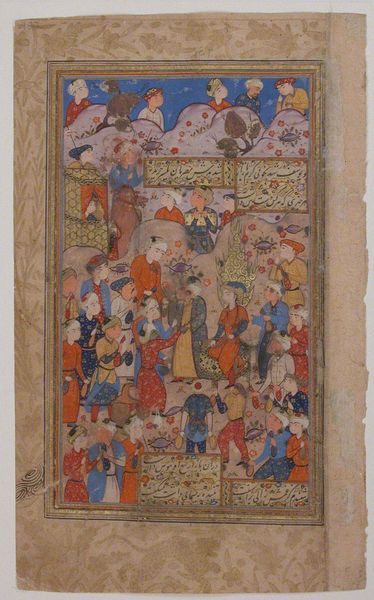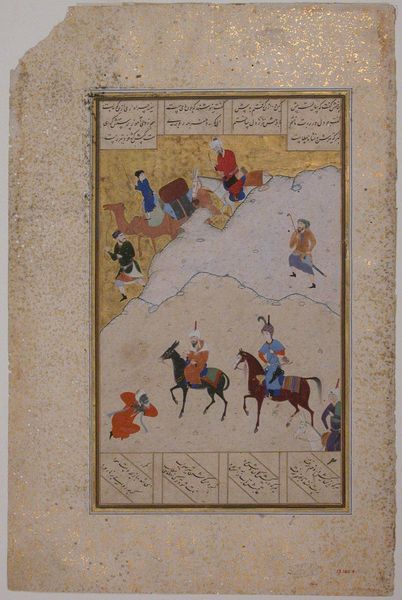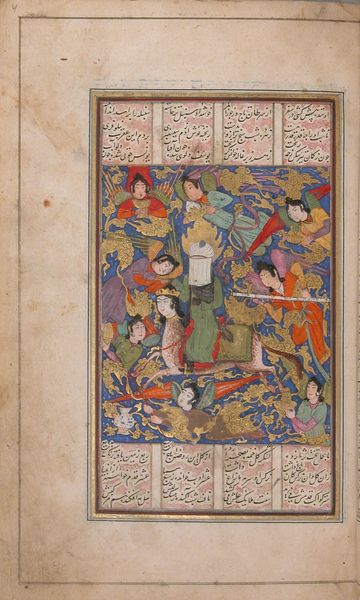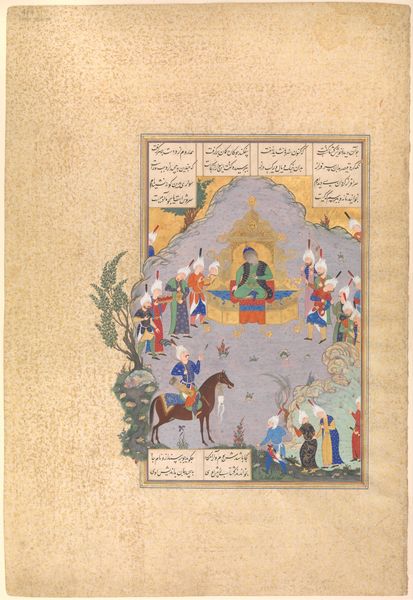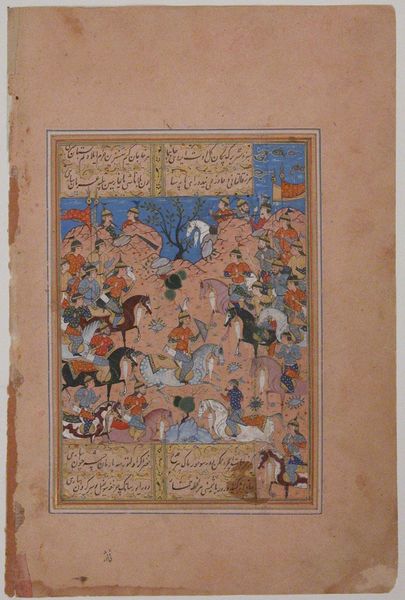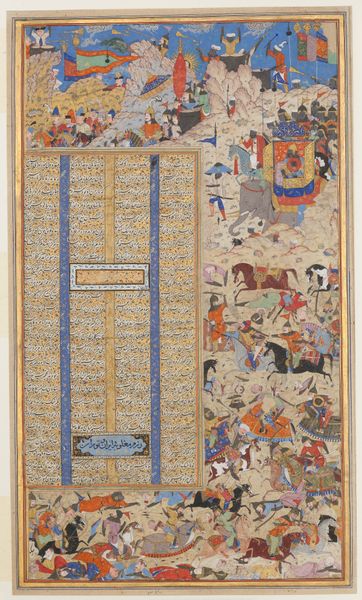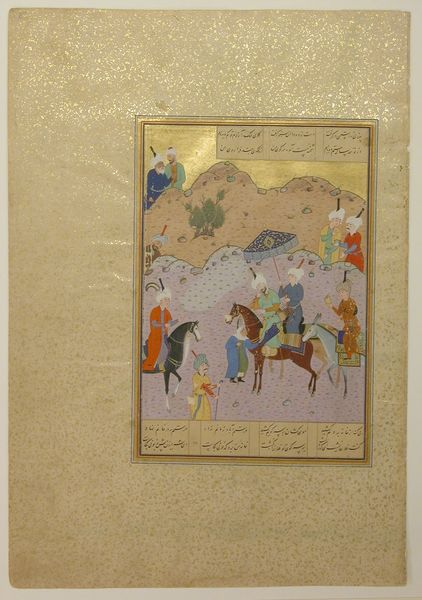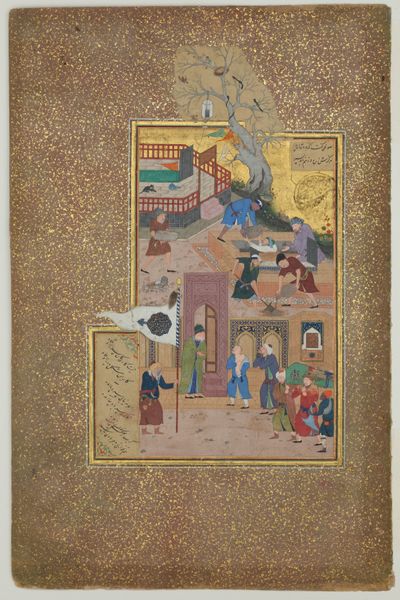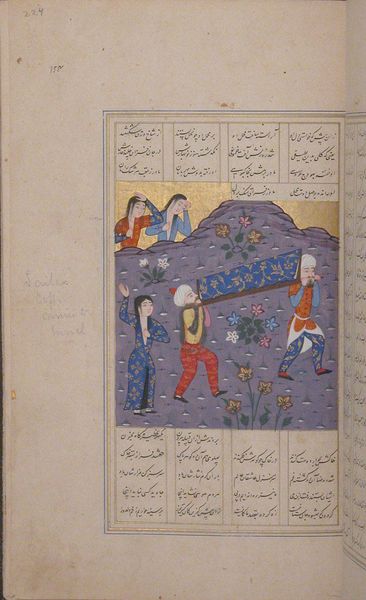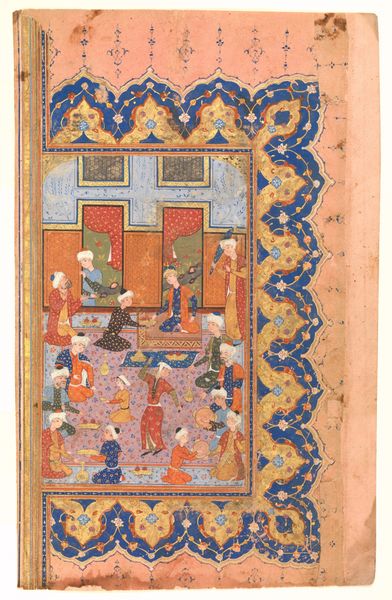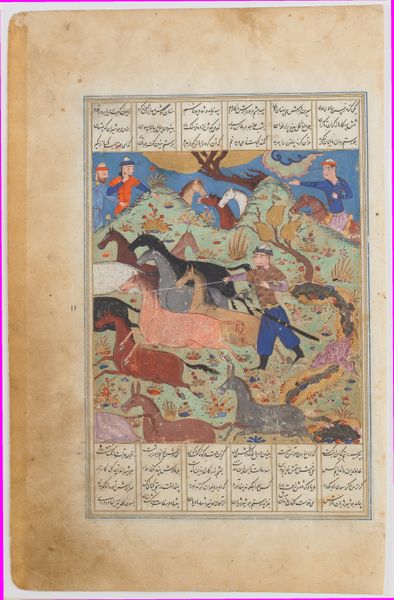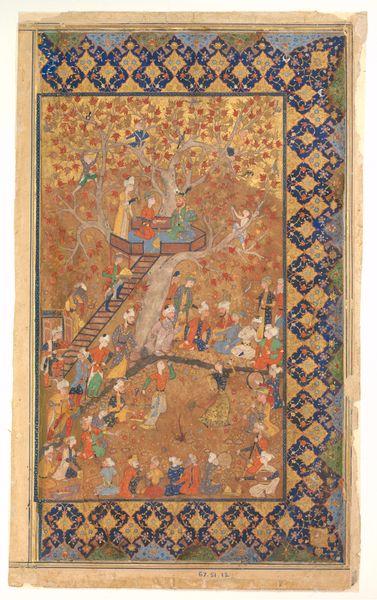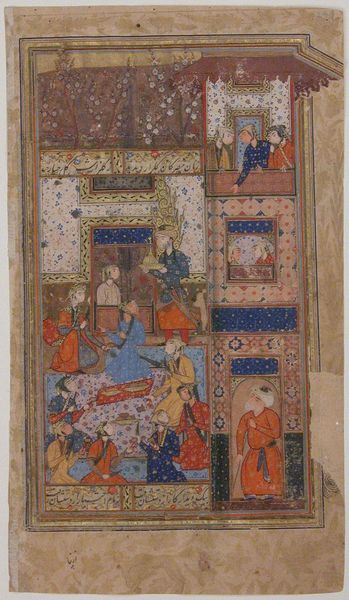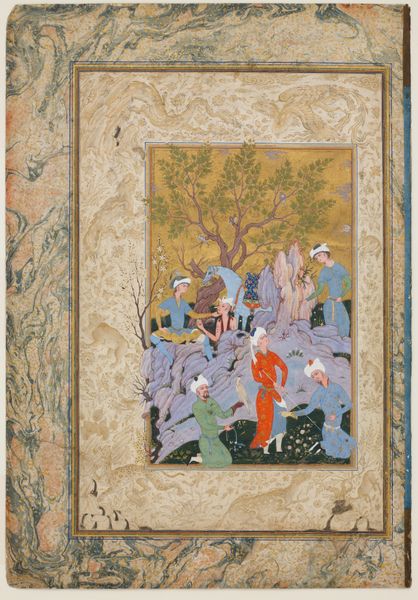
painting, watercolor
#
water colours
#
painting
#
landscape
#
figuration
#
watercolor
#
men
#
islamic-art
#
miniature
#
watercolor
Dimensions: H. 11 1/2 (29.2 cm) W. 7 3/4 in. (19.7cm)
Copyright: Public Domain
Curator: This exquisite painting, "Bustan (Orchard) of Sa'di," a watercolor piece by Mir 'Ali al-Husaini, dates roughly between 1497 and 1547. You can currently find it at the Metropolitan Museum of Art. Editor: The composition really draws me in—the golden backdrop is incredibly striking. It feels almost ethereal. The stark contrast with the active figures gives the whole scene a heightened sense of drama. Curator: The use of gold certainly is deliberate, serving as a backdrop to highlight not just earthly pursuits like polo, but also suggesting a divine light or perhaps, a heightened spiritual plane—quite typical in Islamic miniatures. Notice how the figures are meticulously arranged in relation to it? Editor: Exactly! And the spatial arrangement—or rather, the deliberate lack of traditional perspective—adds to the sense of stylized representation. The ground is clearly not receding; rather, it's presented almost like a tapestry. Curator: It reinforces the symbolic nature of the sport itself. Polo was frequently used to represent the conflict between good and evil, order and chaos. You will see that each player is rendered as a type, expressing the values of chivalry, prowess, or nobility, echoing larger spiritual or political contests. Editor: Yes, and if you look closely, you see there is flat color application. But within those flat fields, you still can recognize detail in the line and costume, and their movements on horseback seem frozen but full of dynamic energy. How might the artist see color in this era? Curator: Color carries coded meaning within Persian miniature painting. It has long been used for spiritual concepts. Certain shades were related to specific elements or virtues, even states of mind. Considering polo was linked to kingship and courtly values, one could argue the blues and reds represent justice and valor. Editor: Fascinating. The whole image operates on multiple layers—a dynamic game on the surface and deeper moral, spiritual, and sociopolitical symbolism within it. Curator: The image serves to elevate a common scene, a familiar story with moral symbolism, making it significant and accessible through recognizable tropes. Editor: It certainly has me rethinking the layers of narrative and artifice at play, seeing beyond simply pigment on the page, right? Curator: Indeed, a blend of skill and allegory that elevates art as cultural artifact!
Comments
No comments
Be the first to comment and join the conversation on the ultimate creative platform.
